|
[ UrbanRail.Net ] [ Europe ] [ Americas ] [ Asia ] [ Africa ] [ Oceania ] [ News ] [ Books ] [ Links ] |
|
GWANGJU
|
| South Korea |
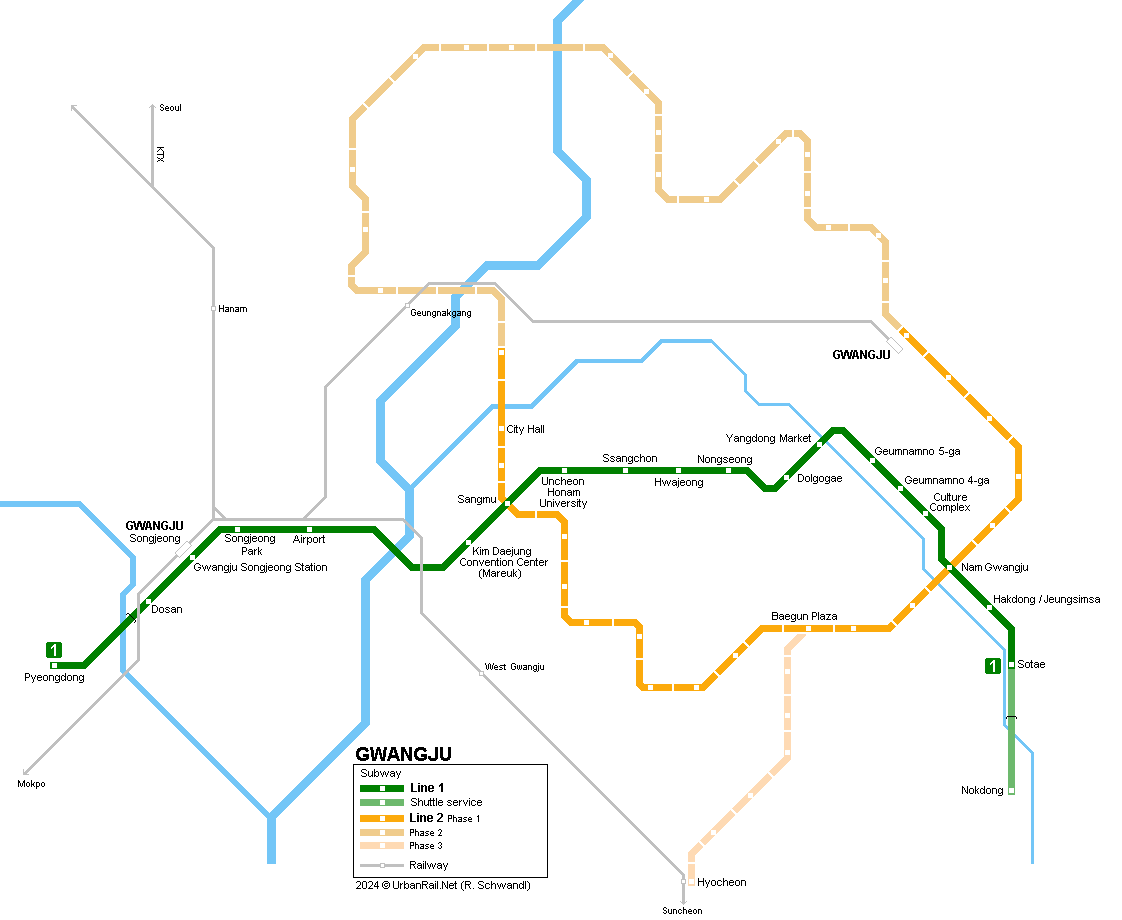
|
[ UrbanRail.Net ] [ Europe ] [ Americas ] [ Asia ] [ Africa ] [ Oceania ] [ News ] [ Books ] [ Links ] |
|
GWANGJU
|
| South Korea |

| GWANGJU |
|
Gwangju* has 1.4 million inhabitants and is situated in the Honam region of South Korea, in the southwestern tip of the Korean Peninsula.
|
| Line 1 |
|
After a delay of several years, the first Gwangju subway line finally opened in April 2004 from Sotae to Sangmu (City Hall), the 11.9 km long stretch includes 13 stations. The western section started operating in 2008. Line 1 crosses the city centre in an east-west direction and the full length is 20.1 km long. There are 19 (+1*) stations and a train depot at each end. 28
April 2004 - Line 1 Sangmu
- Sotae (Nokdong*) *The section between Sotae and the depot at Nokdong is operated is a shuttle service only every 30-60 minutes. |
| Photos |
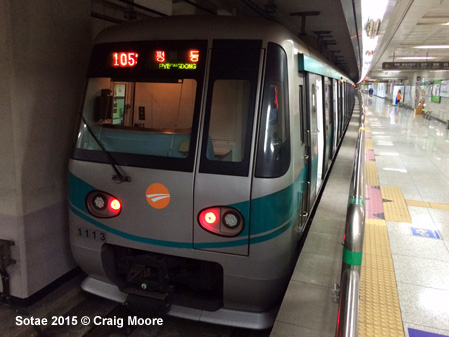
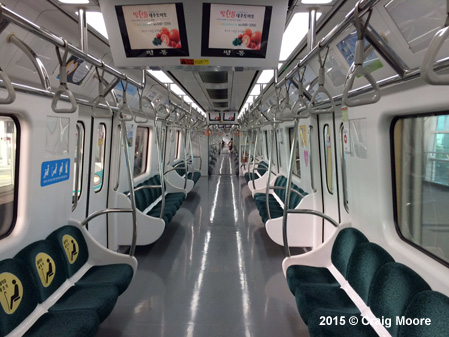
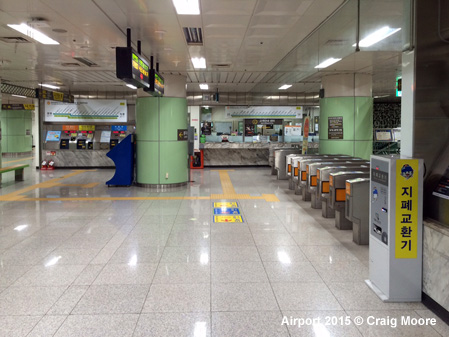
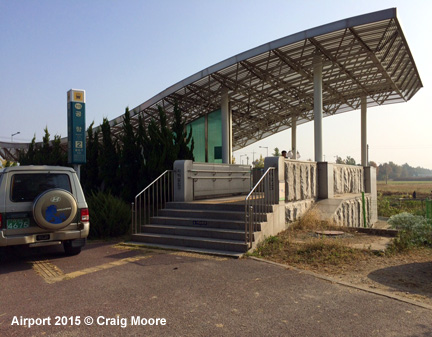
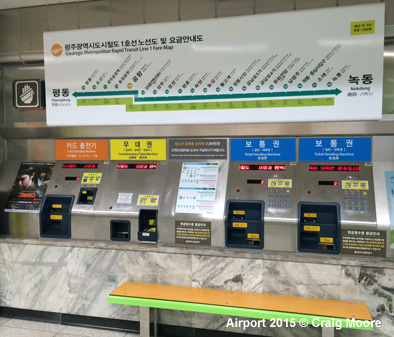
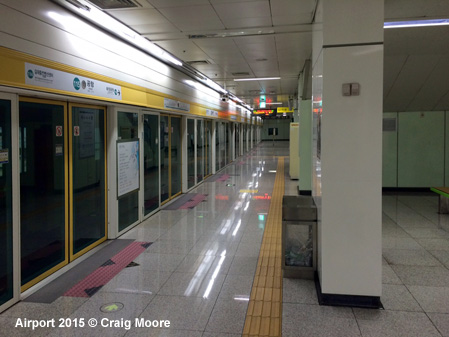
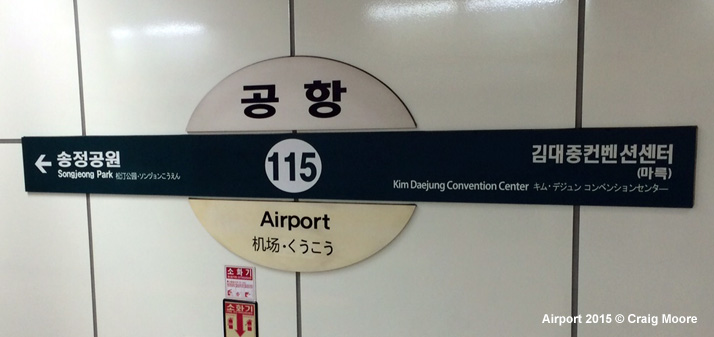
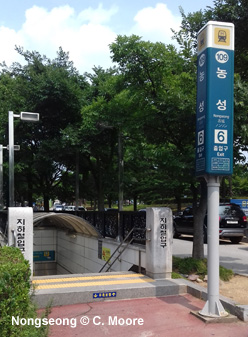
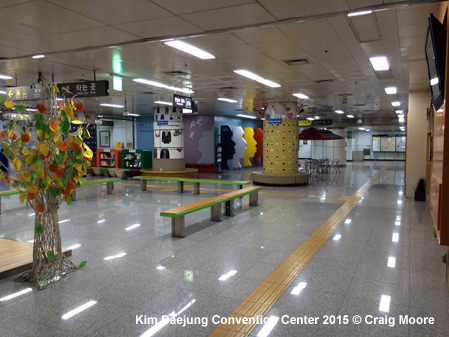
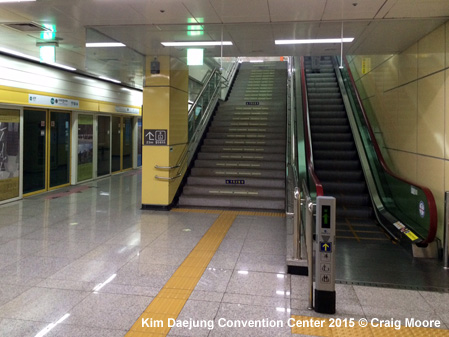
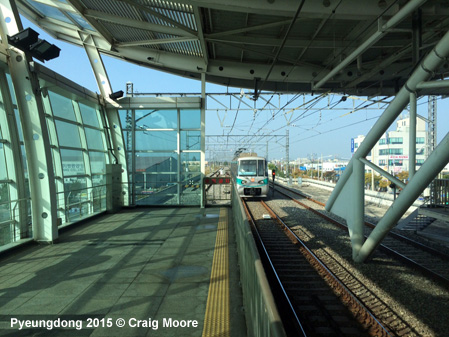
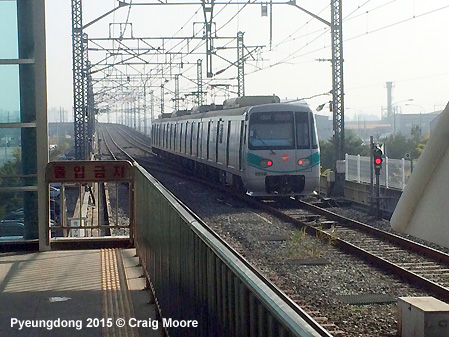
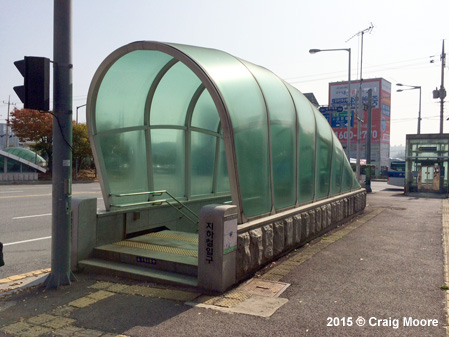
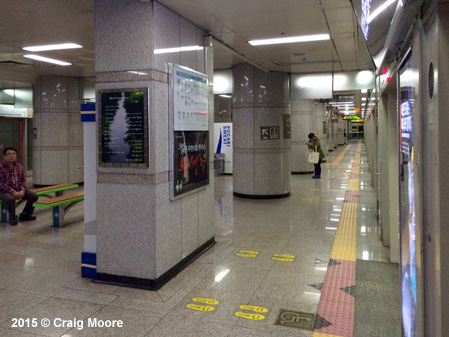
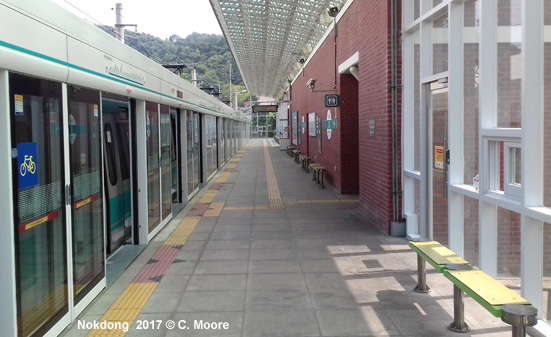
|
| Links |
|
Gwangju Subway (Gwangju Metropolitan Rapid Transit Corporation - Official Site) Gwangju Metro at Wikipedia
|
| Report |
|
Craig Moore reports from Gwangju in Oct. 2015: Gwangju Subway Gwangju is located in the Honam region of South Korea, in the SW of the peninsular. The city is one of the major provincial centres and has long been renowned as a maverick, left-leaning place. The city is located in a lovely mountainous area although the urban area is sadly nothing special. Gwangju joined the Metro fraternity in 2004 with a single line operated by GMRTC. The line has 20 stations (20.1km), 2 of which (the terminus stations*) are above ground (2.6km). The system uses Hyundai Rotem stock in 4 car sets (through sets), on 1435 gauge, with overhead power. The line operates from 0530-2330 with a base headway of 10mins (services from Pyeongdong and Sotae are at 00/10/20 etc) although peak services are at 7min intervals. The journey from Pyeongdong and Sotae takes 33mins with an additional 4 mins from Sotae to Nokdong*. The fare is a flat fee of 1200 Won (€0.65) and comes in the form of a token that is scanned on entry and placed in a slot on exit. Stations are functional, with a bank of fare machines (which confusingly ask for the fare level when it is a flat fare) and large, simple schematic map. Like many Korean systems, escalators are at a premium. Given that stations are located on main north-south and east-west corridors, there is a reasonable Metro presence in the city, despite there only being a single line. Station entrances offer the usual broad structure with stairs to the ticket hall, but at main junctions there are also Fosteritos (see Bilbao) at diagonal points in the junction. Entrances are accompanied by the usual Korean Totem. The Line uses station numbers (100-121 – east to west). Stairs and occasional escalators provide access from the ticket hall to the platforms – in general I'd say Gwangju was quite a shallow system. The platforms are mixed. The newer western extension has broad, light tiles, whereas the older section has smaller tiles in duller colours such as mustard. Sometimes, each platform wall has different colours (all are capable of taking six car sets – trains stop well short). The platform has a schematic which highlights the current station by a ‘step up’ on the horizontal line (see photo below). Most of the stations have full screens but some have fixed half barriers with gaps where train doors are. I've never really understood the value of such barriers. All but Guemnamno 4 and Culture Complex are side platforms (these two stations have broad island platforms). Platforms have lots of large mirrors (for some reason) but are limited in information and advertising. Station name indicators show last and next station in Korean and English. The only geographic maps available are on large posters in station entrances but these are more maps of the city than Metro Route maps. The mezzanine/ticket hall also has train times but in Japanese style. These are not available on the platforms and there is no 'next train' indicator. The journey itself is pleasant enough. Stock is clean and bright and remarkably free of chintzy advertising. There is an electronic route indicator over 4 of the eight doors in each carriage – the other doors also have a line map but with nearby landmarks listed and green circles around the island platform stations. There is electronic information in Korean, Mandarin and English, and audio information in Korean and English. Stations of significance (eg KTX or Airport) have sound affects such as birds tweeting or Brahms Deutsch Symphony - quite the reason I don’t know). Starting from the west, Pyeongdong is elevated and crosses the KTX line before traversing the Hwangnyong River and then takes a slow decline to the portal before Dosan Station. Songjeong has much passenger traffic as it is the KTX terminus. Airport station could possibly be renamed ‘roughly in the vicinity of ...airport’ as its a bit of a treck through car parks and along a road bordered by rice paddies – able bodied with hand luggage is fine but anything else – it's a long treck. From Airport the route heads into Seo-gu district on an east-west trajectory along the main thoroughfare from the convention centre to Nongseong. Here the stations are bunched more closely and have the Forsteritos mentioned above. Further east the line takes a gentle turn South East (you don’t really feel this on the train) along the traditional city centre. Here we find the two island platform stations. Trains then terminate at Sotae*.
*Just every seventh train continues from Sotae to Nokdong providing an hourly service. The line goes above ground 1.0km after leaving Sotae and through a series of switches crosses the large depot from east to west to arrive at Nokdong station which is located to the west of the depot. The total of the line above ground is 2.6km.
This is a functional system. The route covers most trip generating points, the stations are functional, if uninspiring, and headways are moderate but meet demand. |
|
|